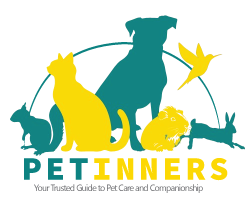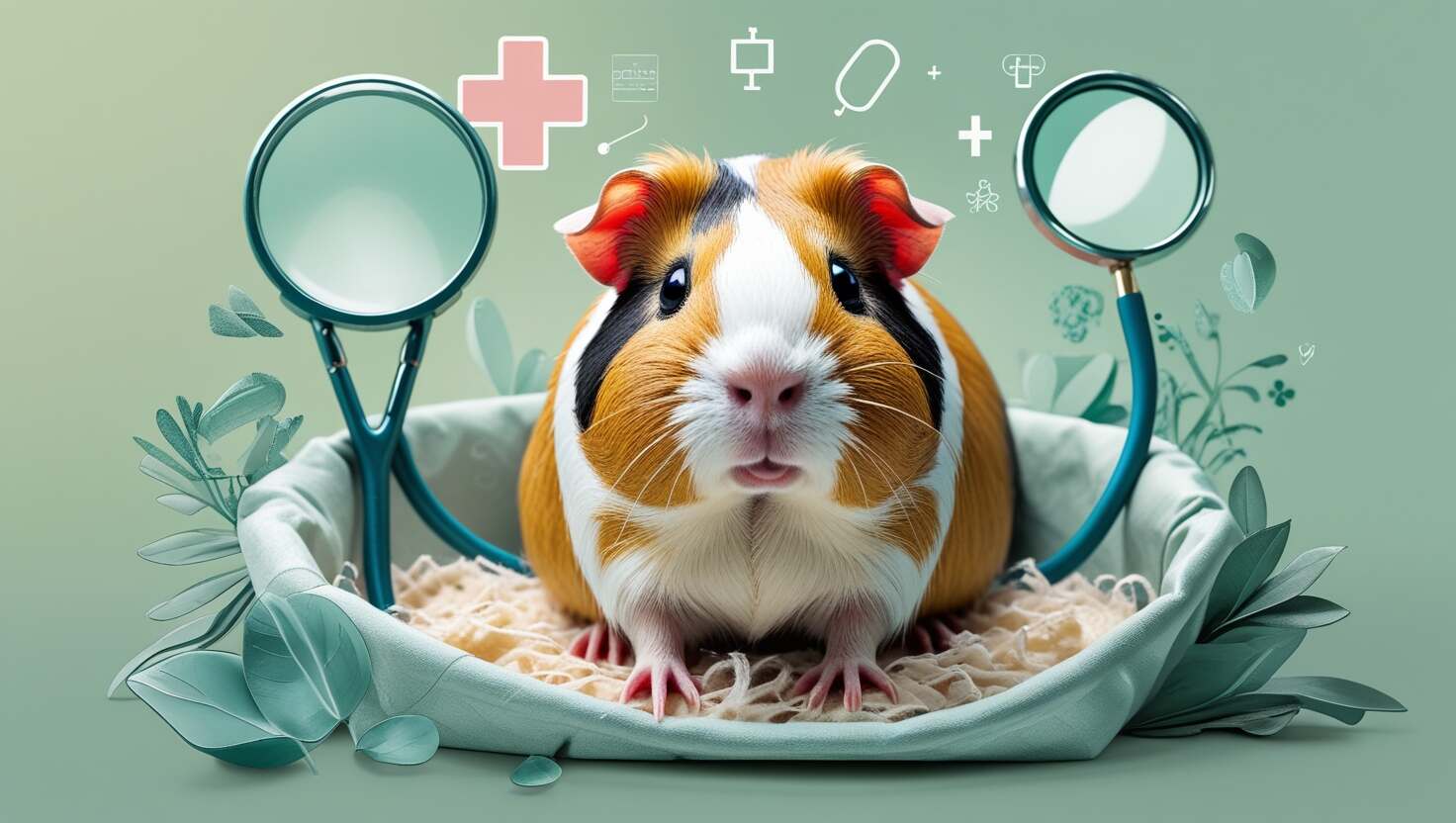Silent Killers: How to Spot and Prevent Deadly Bloat in Guinea Pigs
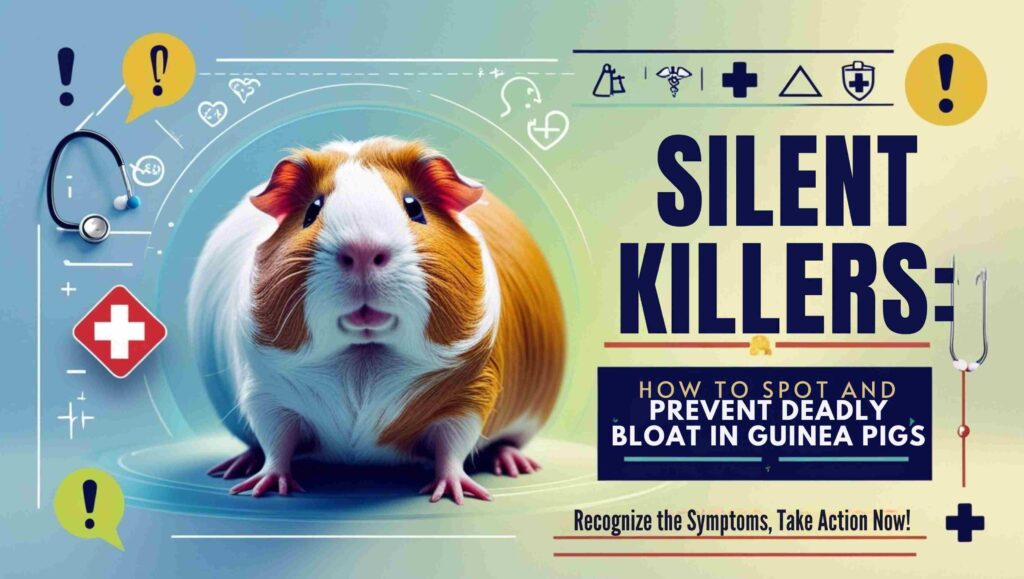
Spot the silent killers: Learn how to recognize and prevent deadly bloat in guinea pigs with these must-know symptoms and life-saving actions. Early intervention is the key to saving your pet’s life—don’t wait!
Early Signs And Symptoms Of Bloat
One of the early signs of bloat in guinea pigs is a hard and Swollen Belly. If your guinea pig seems to be in pain, or you notice a loss of appetite, this could be a sign that something is wrong. Weakness, lethargy, and even muscle spasms can occur as the condition worsens. You may also observe rapid breathing or regurgitation of saliva due to nausea. These symptoms, combined with weight loss or constipation, indicate that your guinea pig may be suffering from bloat.
Pain And Discomfort In Guinea Pigs
In some cases, your guinea pig may whimper when touched because of their sore and distended belly. If you notice these symptoms and suspect bloat, do not hesitate—take your pet to the vet immediately. The sooner they receive treatment, the better the chances of recovery. The symptoms of bloat can escalate quickly, so it’s essential to act fast.
Common Indicators Of Worsening Conditions
Common signs include an enlarged abdomen, damp hair or coat, and lethargy. If your guinea pig is awake but seems restless, this is a clear indication that the condition is progressing. As bloat worsens, the guinea pig may start to drool and eventually become unresponsive.
Rapid Progression And Prevention Of Bloat
The condition can worsen rapidly, often within just hours or minutes, depending on your guinea pig’s ability to cope with the illness. Prevention is much more effective than treatment because, once the symptoms begin, bloat progresses very quickly. Some guinea pigs may show only minimal signs, while others may experience severe symptoms that significantly impact their health.
Severe Symptoms And Life-Threatening Risks
One of the main symptoms of bloat is a visibly swollen abdomen. You might notice your guinea pig showing signs of abdominal pain or a complete refusal to eat or drink. In extreme cases, the swelling can lead to shock, which can be fatal if not treated promptly. A bloated stomach can twist, causing a dangerous condition known as gastric dilation and torsion, which can be life-threatening.
Challenges In Expelling Gas
Since the gas accumulates in a foamy consistency, guinea pigs have a hard time expelling it naturally. If your guinea pig appears bloated but is still eating and drinking, it’s important to stay cautious. It’s easy to wonder if it’s truly bloat or something else. However, given the severity of this condition, it’s vital to consult your vet quickly to identify the cause and get an early diagnosis.
Importance Of Early Diagnosis And Treatment
Always remember, that early diagnosis and prompt treatment can drastically reduce the risks for your guinea pig. It’s always better to rule out bloat early than face a situation where it’s too late to help your pet. When your guinea pig shows signs of bloat, their abdomen will become swollen and enlarged. You might notice their belly looks rounder or more distended than normal. Along with physical changes, you may observe behavioral shifts—your guinea pig may become lethargic, refuse to eat or drink, or start making unusual noises.
Veterinary Intervention For Severe Bloating
If your guinea pig is experiencing severe bloating, you might notice them struggling to breathe or showing signs of discomfort. At this stage, the first step is to contact your veterinarian. They can give you the right guidance and advice on how to treat your guinea pig’s bloating and help you prevent it from happening again.
Risk Factors For Bloat In Guinea Pigs
Several risk factors contribute to bloat and GDV in guinea pigs, which are similar to those seen in dogs and horses. These factors include breed predisposition, sex (with females being more prone), and stressors such as fasting or gastrointestinal diseases. The ingestion of gas-producing feeds or foods high in sugar content can also increase the likelihood of this condition. Just like in other animals, a lack of exercise, obesity, and strenuous exercise can make guinea pigs more vulnerable to bloat. It’s important to keep an eye on these aspects to prevent the condition from worsening.
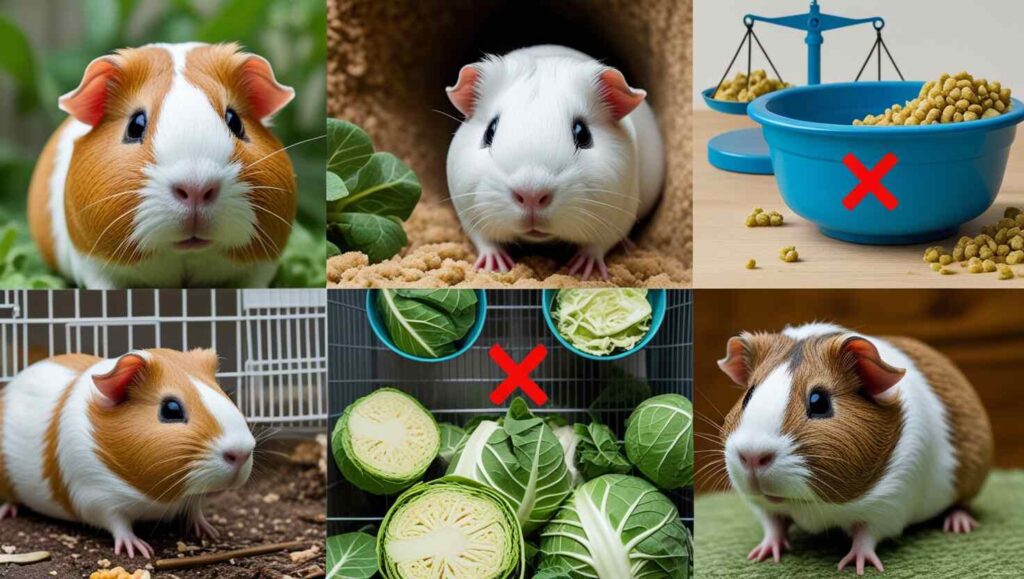
If your guinea pig has a previous history of bloat or GDV, the risk is even higher. Bloat in guinea pigs is an acute abdominal emergency that can quickly kill if not promptly treated. In fact, GDV is also referred to as twisted stomach, torsion of the stomach, or gastric volvulus. It’s essential to address the signs early and ensure your guinea pig’s right diet and lifestyle minimize these risks.
Potential Causes And Risk Factors
While the exact reasons guinea pigs might develop gastric volvulus are unclear, some factors may increase the risk:
- Eating Habits: Eating habits can greatly impact a guinea pig’s health. Guinea pigs that quickly consume large amounts of dry food and water may be at a higher risk of developing bloating. Fast eating can lead to swallowing excess air, which contributes to digestive issues. Monitor your guinea pig’s feeding habits and provide meals in smaller portions to help regulate their eating pace and reduce potential risks.
- Gastric Stasis: Gastric stasis is a condition where the stomach struggles to empty, often caused by issues like dental disease or a diet lacking fibre. Its symptoms can mimic gastric volvulus, including a reduced appetite and changes in faeces production. Ensuring a fiber-rich diet and addressing any dental problems promptly can help prevent this condition and keep your guinea pig’s digestion healthy.
- Pregnancy: During late pregnancy, female guinea pigs experience changes in their abdomen that may make them more susceptible to developing gastric volvulus. The added pressure from carrying babies can affect their digestion and increase the risk of bloating. Monitoring their health closely during this time and providing a balanced diet can help reduce the chances of complications.
Twisted Stomach (Gastric Volvulus)
A twisted stomach, also called gastric volvulus or GDV (gastric dilatation volvulus), happens when a guinea pig’s stomach twists upon itself. This condition can cause serious complications like blockages or reduced blood flow, which can severely affect your pet’s health. If you notice symptoms of discomfort or bloating, it’s important to act quickly as this condition requires immediate attention to avoid further complications.
Symptoms Of A twisted stomach
Some guinea pigs may not show obvious symptoms of a twisted stomach, but the condition can escalate fast. Your pet may seem perfectly healthy one moment, only to display severe distress in a short time. In extreme cases, guinea pigs can even pass away unexpectedly within hours. It’s crucial to keep an eye out for specific symptoms, such as changes in behavior or posture, to address the issue before it becomes fatal. Acting quickly can save your guinea pig’s life. However, there are specific symptoms to keep an eye out for:
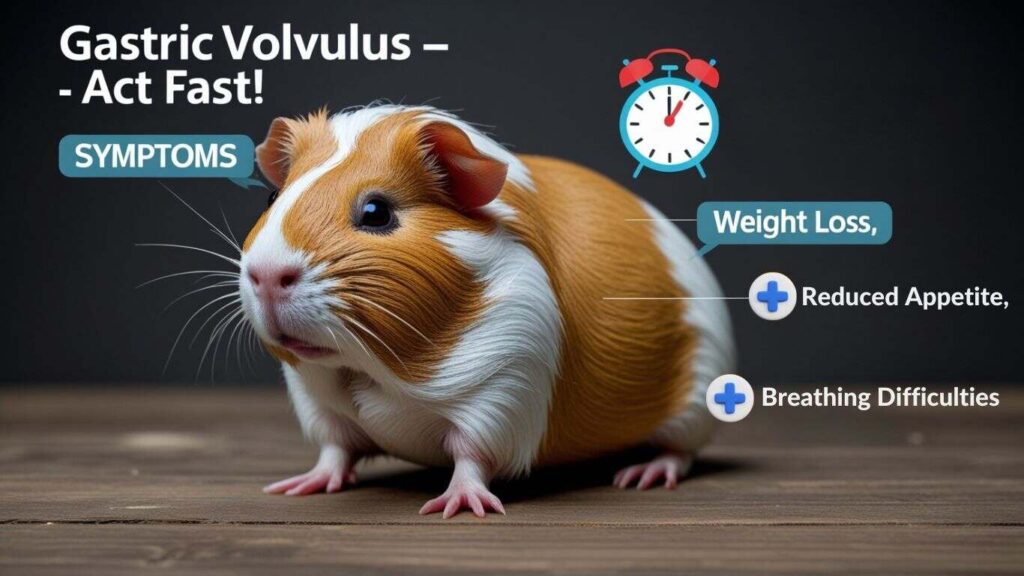
- Weight Loss: Weight loss in guinea pigs, especially a noticeable decrease in weight, can be an early sign of many conditions, including gastric volvulus. If you observe that your guinea pig is losing weight without any obvious reason, it’s important to act quickly. Weight loss often points to underlying health issues, and addressing it early can prevent further complications and ensure your pet’s wellbeing. Regular weight checks are a simple but effective way to monitor their health.
- Reduced Appetite: A reduced appetite in your guinea pig, whether they are eating less or not at all, is always a cause for concern. It could indicate underlying health issues, including digestive problems like bloating. Monitor their food intake closely, as guinea pigs rely on constant feeding to maintain a healthy gut. If you notice any changes in their eating habits, consult a veterinarian immediately to prevent complications.
- Breathing Difficulties: Breathing difficulties can be a serious symptom if your guinea pig appears to be struggling to breathe, especially when their stomach seems swollen. This could indicate severe bloating or another critical condition requiring immediate attention. If you observe these signs, act quickly and consult a vet to provide your pet with the care they need to prevent further complications.
- Lethargy: Lethargy in a guinea pig, where they seem uncharacteristically tired or listless, is a clear sign that something may be wrong. This behavior requires attention as it often indicates underlying health issues, including bloating or other digestive problems. If your guinea pig appears unusually inactive, monitor their behavior closely and consult a vet to address any potential issues early.
- Changes in Faeces Production: Changes in faeces production, such as a decrease or absence in faeces, can be a serious sign that something’s not right with your guinea pig’s digestion. Healthy digestion is vital for guinea pigs, and any irregularities should be addressed immediately. If you notice such changes, consult a veterinarian promptly to ensure their digestive system is functioning properly and to prevent further complications.
The Truth About Grass Clippings And Guinea Pigs
After cutting your lawn, it might seem harmless to feed grass clippings to your guinea pigs, but this is wrong. You may be surprised to learn that grass clippings should not be fed to them. Grass mowings can cause excessive wind build-up in your piggies and may contain a lethal combination of unsafe plant material. If fed, owners often find their piggies with springy, expanded bellies, a clear sign of bloating. Always provide fresh, untreated grass instead to avoid these risks.
What Should I Do If I Fed My Guinea Pigs Grass Mowings?
When guinea pigs consume lawn clippings, they may develop bloat quickly due to the rapid fermentation of grass in their digestive system. To address this issue, you can use gripe water—a remedy traditionally used for babies to alleviate gas. Administer a small amount of gripe water to your guinea pig using a syringe to help ease the gas buildup.
After hydrating your guinea pig, gently massage the sides of its belly to stimulate the release of trapped gas. Repeat this process 2-3 times over the span of a few hours. These steps can provide significant relief. However, if the symptoms persist or your guinea pig does not improve, it’s crucial to seek professional advice from your veterinarian without delay. Early intervention can make all the difference in your pet’s recovery.
Diagnosis And Treatment
If you think your guinea pig has stomach torsion, seeing a vet is crucial, as this is a serious emergency. X-raying can assist veterinarians in diagnosing conditions like gastric volvulus, but unfortunately, the prognosis is not good for this condition. While surgery can be undertaken, its success rates are low. This information comes from an article on the National Library of Medicine website, which compares gastric volvulus in guinea pigs to other species and provides links to related articles on the subject. Early intervention is key to giving your guinea pig the best chance of recovery.
Conclusion
In conclusion, preventing and addressing bloat in guinea pigs requires vigilance, early recognition of symptoms, and immediate intervention to save your pet’s life. Key signs like a swollen belly, lethargy, reduced appetite, and changes in behavior or faeces production should prompt quick action, including consulting a veterinarian. Risk factors such as diet, eating habits, pregnancy, and stress can significantly contribute to this life-threatening condition, with severe cases potentially leading to gastric torsion. Ensuring a balanced, fiber-rich diet, monitoring feeding habits, avoiding risky foods like grass clippings, and providing prompt treatment, such as gripe water or veterinary care, can greatly improve outcomes. Early diagnosis and proactive care are essential to safeguarding your guinea pig’s health and well-being.
